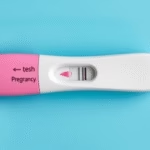Understanding Implantation Bleeding with Clots
Implantation bleeding is a term used to describe light spotting or bleeding that occurs when a fertilized egg attaches itself to the lining of the uterus. This usually happens around 6 to 12 days after conception, coinciding with when a woman’s period would typically occur. While some women experience implantation bleeding as faint spotting, others may notice blood clots present in the discharge. It is essential to understand that implantation bleeding is generally lighter and shorter in duration compared to a regular menstrual period.
For many individuals, the presence of clots can lead to confusion or concern regarding the health of the pregnancy. Clots during implantation bleeding can vary in size, and while they may be alarming, they often do not indicate a problem. The appearance of clots may result from hormonal changes or the dynamics of the implantation process. Recognizing the nuances of implantation bleeding and when to seek medical advice is crucial. In the following sections, we will explore various aspects of this topic, aiming to provide clarity and support for those who may be assessing their symptoms.
What Causes Implantation Bleeding?
The primary reason for implantation bleeding is the process of the fertilized egg embedding itself into the uterine lining. When this occurs, tiny blood vessels may break, resulting in light bleeding or spotting. The hormone progesterone, which helps maintain pregnancy, can also affect the uterine lining, leading to variable bleeding patterns. Clots may be present due to pooling of blood in the uterus during this process.
It is essential to note that not every woman will experience implantation bleeding, and those who do may experience it differently. Some factors that may influence the occurrence of implantation bleeding include hormonal fluctuations, the ease of implantation, and the overall condition of the uterine lining. Women with a thick uterine lining may experience more significant bleeding, while a thinner lining might lead to hardly noticeable spotting.
Differences Between Implantation Bleeding and Menstrual Period
Understanding the differences between implantation bleeding and a menstrual period is key for anyone trying to conceive. While both can involve light spotting, there are notable distinctions. Generally, implantation bleeding is:
- Shorter in duration, lasting a few hours to a couple of days.
- Light in color, often ranging from light pink to brown.
- Less intense than menstrual bleeding, often just a few drops.
In contrast, a menstrual period typically occurs at regular intervals and involves a heavier flow. It may last from three to seven days and the color usually changes from bright red to a deeper hue. Recognizing these differences can help individuals identify what they are experiencing.
Factors Influencing Clots During Implantation Bleeding
The presence of clots during implantation bleeding can vary significantly among individuals. Factors influencing clot formation can include:
- Hormonal Levels: Hormonal fluctuations directly affect the uterine lining. Adequate progesterone levels help maintain pregnancy and can influence clot formation.
- Uterine Condition: A healthy uterine lining is more likely to sustain a viable embryo, reducing chances of clot formation.
- Timing: Investigation of when implantation bleeding occurs in relation to typical cycle days is essential for clueing into the differences from a period.
Clots often present are small and may not indicate an underlying issue. It is important to track symptoms and consult with a healthcare professional if there are concerns about the nature or frequency of bleeding.
When to Seek Medical Advice
While light spotting with or without clots can be normal, there are instances when seeking medical advice is warranted:
- If the bleeding becomes heavy and is accompanied by pain.
- If there are large clots present or clotting persists over several days.
- If other symptoms arise, such as fever, chills, or severe cramping.
Medical professionals can carry out a thorough assessment, including blood tests or ultrasounds, to ensure the health of both the mother and the developing embryo. Seeking early guidance can provide peace of mind and direct care if necessary.
Natural Remedies and Home Care for Implantation Bleeding
Many women look for natural remedies or home care methods to manage symptoms related to implantation bleeding. Although it is crucial to consult with a medical professional, some methods that may promote health during this stage include:
- Staying Hydrated: Drinking plenty of fluids helps maintain overall health and assists in circulation.
- Balanced Diet: Incorporating fruits, vegetables, and lean proteins supports hormonal balance and uterine health.
- Rest: Ensuring adequate sleep and rest can enhance recovery and promote overall well-being.
By practicing self-care and monitoring symptoms, individuals can create a supportive environment for their bodies. However, it is vital to address any unusual pattern or discomfort with a healthcare provider promptly.
Myths Related to Implantation Bleeding
There are several myths surrounding implantation bleeding that can often confuse individuals. Understanding the facts can dispel common misconceptions. Some prevalent myths include:
- Myth: Implantation bleeding is heavy and painful.
- Myth: Clots during implantation bleeding always indicate a problem.
- Myth: Implantation bleeding always occurs on schedule.
It is essential to educate oneself on the realities of implantation bleeding versus myths that can perpetuate anxiety. Accurate information empowers individuals to make informed decisions about their reproductive health.
Emotional Impact of Implantation Bleeding
The experience of implantation bleeding can lead to a range of emotional responses, from excitement at the possibility of pregnancy to fear and concern about the health of the embryo. Emotional fluctuations can be heightened due to hormonal changes in the body. Thus, it is beneficial for individuals to find emotional support during this time.
Engaging in discussions with partners, friends, family members, or online communities can provide the necessary support to navigate through uncertainty. Consideration towards adopting relaxation techniques, such as mindfulness or gentle yoga, can also contribute positively to emotional health.
Final Thoughts
In conclusion, understanding implantation bleeding and its characteristics is crucial for any individual trying to conceive. While spotting with clots can lead to concern, it is often a normal part of the implantation process. Knowing the differences between implantation bleeding and a menstrual period is vital. Individuals should stay informed about factors influencing clotting, when to seek medical advice, and how to care for one’s emotional and physical health during this time.
Embracing education about this topic can help dispel myths and reduce anxiety. Natural remedies can support overall wellness, while emotional well-being may be enhanced through connection with others. Always remain proactive in health management and don’t hesitate to contact healthcare providers about any concerns.
Frequently Asked Questions
- What does implantation bleeding with clots look like? Implantation bleeding is usually light pink or brown and may contain small clots. It is lighter than menstrual blood.
- How long does implantation bleeding last? It typically lasts a few hours to a couple of days, much shorter than a regular period.
- Is it normal to have cramping with implantation bleeding? Mild cramping can occur during implantation due to the uterine lining’s adjustment but should not be severe.
- Should I be worried if I see clots during implantation bleeding? Small clots can be normal; however, it is vital to consult a healthcare provider if they are large or accompanied by heavy bleeding.
- What should I do if I experience heavy bleeding? Heavy bleeding may indicate a need for medical evaluation to rule out any complications in the pregnancy.
Further Reading
What Type of Psychotherapy Is Best for Anxiety?







